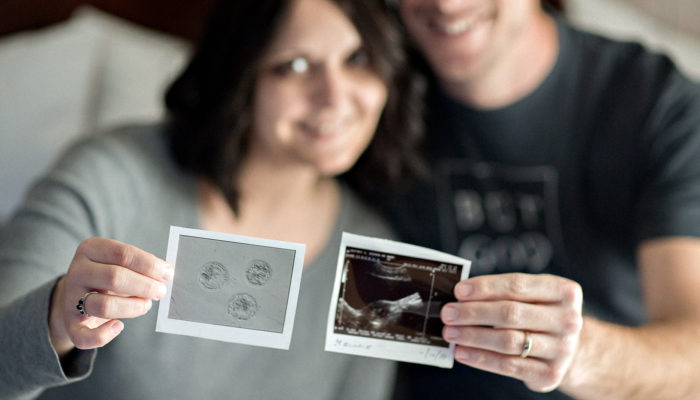Roughly a month has passed since announcing that we are pursuing embryo adoption! After waiting so long for the green light to officially move forward into this specific process, it’s been a little surreal wrapping our brains around the reality that we are, in fact, doing this. Not just hoping to as has been the case for several months. Of course, there are still unknowns and possibilities that it won’t turn out the way we plan. But we are moving forward, and resting confidently that this is the next right step, even if it meets us with disappointment.
It is crazy to think that a year ago we were stuck on that first pile of paperwork. Fixated on all of the unknowns and what ifs. So many friends came alongside us and encouraged us to take on this seemingly impossible mountain one step at a time, in faith. To do so trusting that God would show up in unexpected ways. I thought I knew God’s character back then. But oh how He has increased my understanding of who He is through it all.
The spiritual and emotional aspects of this process have far exceeded my expectations! It has been more difficult, and yet at the same time, even sweeter than I ever would’ve imagined. And even though as a feeler, obscure contemplation is where I typically dwell, I recognize that sometimes in order to comprehend the magnitude of the intangible, it helps to ground ourselves in the basics. So today, I’m breaking stride a bit and offering a little insight for those of you who have general questions about the miracle that is embryo adoption.

EMBRYO ADOPTION FAQS
What is embryo adoption?
After a family is successfully completed through IVF (in vitro fertilization), there are oftentimes remaining embryos. These embryos are placed in cryopreservation, where they are suspended in time (i.e. frozen in liquid nitrogen). The genetic parents can choose to either keep the embryos frozen in storage indefinitely, donate them to scientific research, allow them to thaw and succumb in culture, or donate them to be placed within another family to have a chance to develop and be given a life with potential.
Through embryo adoption, the donated embryos will be matched with an adoptive family, and the adoptive mother then has the opportunity to carry and give birth to her child.
How did you first hear about embryo adoption?
About a decade ago I was introduced to embryo adoption through a book I was flipping through. I actually didn’t read much of that book, but must have lingered long enough to learn that embryo adoption exists. Upon sharing this discovery with the Mister, we agreed that it might be a good fit for us someday, and filed away that nugget just in case.
Fast forward to about six months after we moved to Middle Tennessee. We’d started attending the church we now call home and were introduced to a couple based on a shared home state. With several additional commonalities, it was an instant friendship. A month or so later, we learned that they were in the process of embryo adoption. They shared with us that one of the best embryo donation/adoption programs in the nation is located in Knoxville, just a few hours away from where we now live. This made this unique form adoption stand out as not only an option we were highly interested in, but one that was easily accessible from a proximity standpoint.
What are the differences between embryo adoption and traditional domestic adoption?
Couples go through a home study with a local adoption agency, the same as a couple pursuing domestic adoption would. However, rather than moving forward with that agency and waiting to be matched with a birth mother/family, the next steps are more medically involved – ensuring a healthy transfer and safe environment for the embryo(s) to develop.
The matching process is a bit different as well, as there are so many embryos already waiting (whereas there are more couples looking to adopt newborns than are newborns waiting for placement). Genetic parents are oftentimes still involved, though, and can have final say regarding the adoptive family.
Another significant difference is the date of finalization. With traditional adoption, there is both a waiting period and a final home study visit months after the child is placed in a home. Embryo adoption is finalized the day of transfer, followed by a bonus nine month period of bonding prior to birth.
When will you have your baby?
There are so many variables, an uncertain timeline, and no guarantees. We are pacing ourselves for a long last leg of the journey, and are looking forward to the day we can provide a more specific answer to this one – God-willing – in the form of a due date!
What’s with the snowflake?
“Snowflake Baby” is a term commonly used for children who were adopted as embryos. This symbolism is not only applicable because embryos are frozen (-320℉), but is also a sweet reminder that embryos are unique and fragile, just like a snowflake.
I’m interested in embryo adoption (or donation) and would love to hear more from your perspective. Can we chat?
Yes!! Whether we’ve met or not, please don’t hesitate to reach out. We have been richly blessed by friendships with others who have/are walking through this process, and can’t imagine going through this any other way. As advocates for the importance of building relationships, we’re happy to chat regardless of where you’re at in the process!
Feel free to reach out with general questions as well. We may not be able to respond to all questions directly, but will certainly consider a future entry that touches on any additional questions we receive.


